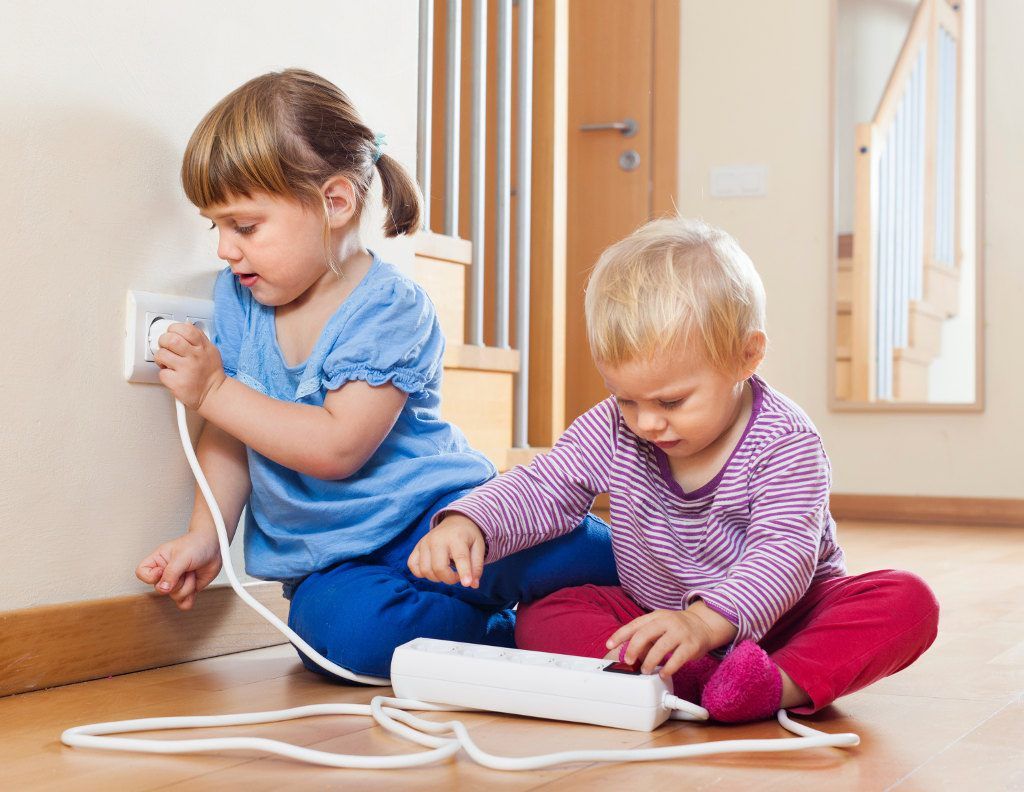Safety and Injury Prevention for Children
April 25, 2018
As parents and caregivers, we always want to protect our children and ensure their safety. This means making sure indoor and outdoor environments are safe, and that we teach them how to protect themselves as well. This post, while not an inclusive list, covers several aspects of safety including household, outdoor, poison, fire and internet safety. If you have specific questions about your child’s safety, we recommend you first speak with your child’s pediatrician.
The first line of defense to keep your child safe begins in your home. Have you gotten down on the floor to take a look around, from a baby or child’s perspective? You’ll be surprised at what you see! Take a look at outlets, wires, tall bookcases, plants and more. If they are accessible, you’ll need to make adjustments so your baby cannot reach, pull or chew on any of these potential dangers.
Let’s go over some common danger areas in the home:
Windows: Window guards should be installed on all windows in your home. Be sure an adult can open them in case of fire. If a window is open more than four inches, a child can fall out. Screens offer protection from bugs, not from falling.
Blinds/Shades: There is a strangulation risk from corded blinds and shades! Ideally, install only cordless window treatments. Be sure to keep cribs, furniture and climbable surfaces away from any windows. Shorten pull cords to the shortest usable length. Tighten continuous-loop cords tight, and anchor with a tension device. Check manufacturer’s directions for more information.
Kitchen: Be sure to turn handles from pots and pans toward the back so they cannot be pulled off. Be sure to teach children that the stove and oven are not to be touched because they get very hot. Install a stove guard and knob covers. Knives must be kept out of reach of children. If you have a garbage disposal, warn children of its dangers.
Cabinets and drawers: Use safety latches so young children cannot open these. Even so, be sure to keep dangerous products (cleaning chemicals, medications) out of reach of children—safety latches are not guaranteed failsafes.
Electric appliances/wires: Cover any unused electrical outlets with safety covers. Be sure cords are out of reach; children can pull on cords, making objects fall, or children can trip over cords. Lamps pose an overlooked safety hazard as they can be pulled down. Try using Velcro or Command tape to secure lamps to tables. Watch for floor lamps that tip easily.
TVs: While many of us mount flat screen TVs on the wall, many are on top of stands or in wall units. Climbing or standing children can grab hold of the TV and pull it down, with the risk of it falling on them. Be sure your TV is secured to any stand or unit if it’s not mounted on a wall.
Bookcases: These look like large ladders to children, so be sure to install anchors for bookcases. These secure the unit to the wall behind it, preventing children from climbing or grabbing on and having the unit fall on them.
Plants: Be sure to purchase only nontoxic houseplants and keep out of reach of young ones.
Fireplace: For safety tips, visit https://parent.guide/how-to-baby-proof-your-fireplace/. Consider adding a padded bumper around the hearth, especially if it’s a raised ledge.
Batteries: Many toys and household items contain small round batteries, which pose a choking hazard to children. They can also leak chemicals and cause burns. Keep devices that use these small batteries out of reach of children, or place a piece of duct tape over the controller so children cannot access the battery. Store loose batteries locked away as well. If you suspect your child ingested a battery, contact the National Battery Ingestion Hotline at 202-625-3333.
Small items: Be extra careful about any small items throughout the house—pen caps, jewelry, magnets, soda bottle caps—and keep them out of reach of young children.
Heating: Cover or block access to radiators and heat vents. Do not use portable electric heaters near children.
Laundry room: Never let children handle single-use detergent packets; keep them in the original container unless actively placing one in the washing machine, seal the container after use, and store the container in a locked cabinet. Use child safety locks on front-loading washers and dryers to prevent your children from opening them or crawling in, especially during use.
Fire safety: Make sure there is a working smoke and CO alarm outside every bedroom, on every floor, and in the garage. Test the alarms and changes the batteries each time we change the clocks. Keep flashlight and fire extinguishers in your home and know how to operate them. Teach children never to play with candles, lighters or matches. Do not overload any outlet with too many plugs; never run cords under rugs or carpet. For more fire safety tips: https://www.nfpa.org/Public-Education/By-topic/Safety-in-the-home/Escape-planning/Basic-fire-escape-planning
Poisons: Open windows for ventilation when using cleaning products. Never use barbeques or other outdoor equipment indoors for cooking or heat! These can cause carbon monoxide poisoning. Lock up medicines, cleaning solutions, cosmetics and soaps out of reach of children. Teach children never to eat, drink or open products if they don’t know what they are. Know the poison control hotline phone number: 800-222-1222.
Outdoor safety is important too! Keep these tips in mind as the weather changes and more time is spent outdoors:
Streets: Teach young children to hold an adult’s hand and look both ways—twice—before crossing a street. Tell them never to run into the street to chase a ball or toy. Train your children to watch for cars backing out of driveways. Teach your child to use hand signals when on a bike.
Safety gear: Children should always wear a helmet and elbow pads when riding bicycles. For rollerblading and skateboarding, they should wear helmets, knee and elbow pads and wrist guards. Street safety rules apply here as well.
Sun safety: Babies younger than six months should be kept out of direct sunlight, as their skin is too sensitive for sunscreen. Babies older than six months must have sunscreen applied 30 minutes before going outside. Reapply every 2 hours, or after sweating or swimming.
Water: Never leave infants and young children alone near any water. They can drown in less than 2 inches of water—bathtub, bucket of liquid, toilet. Teach children 4 and older to swim, and supervise them at all times. If you have a pool or hot tub, be sure there is a locked fence at least 4 feet high enclosing it. Pool and beach toys are not appropriate flotation devices. For more details about water safety, see our previous post: https://mksallc.com/theres-still-plenty-summer-left-safe/
Important car safety information:
Use seats that meet or exceed Federal Motor Vehicle Safety Standards. For more information visit: https://www.nhtsa.gov/equipment/car-seats-and-booster-seats. Always use safety seats, even for short rides. Before installing a car safety seat, read the seat instruction manual and your car owner’s manual. You can get installation help with a car seat inspection and register your seat for recall notices: https://www.nhtsa.gov/equipment/car-seats-and-booster-seats#installation-help-inspection. If your child’s seat has been in an accident, replace it with a new one. For special needs children, contact your child’s pediatrician for help with finding an appropriate seat.
In addition to these tips, be sure to take classes in infant/child CPR and first aid, keep a first aid kit handy, and have important phone numbers nearby for caregivers (poison control, pediatrician, fire department). For a comprehensive safety checklist, https://www.safekids.org/safetytips/field_venues/home?gclid=EAIaIQobChMI9JOfgp2P2gIVQVuGCh37PQbUEAAYASAAEgLIR_D_BwE. It’s easy to have fun, but more important to be safe! If you have any questions, contact your child’s pediatrician. We are also available if you have any questions about your child’s development or behavior. We can be reached at 516-731-5588.
Some information shared courtesy of Children’s Home Society of California, www.chs-ca.org.
